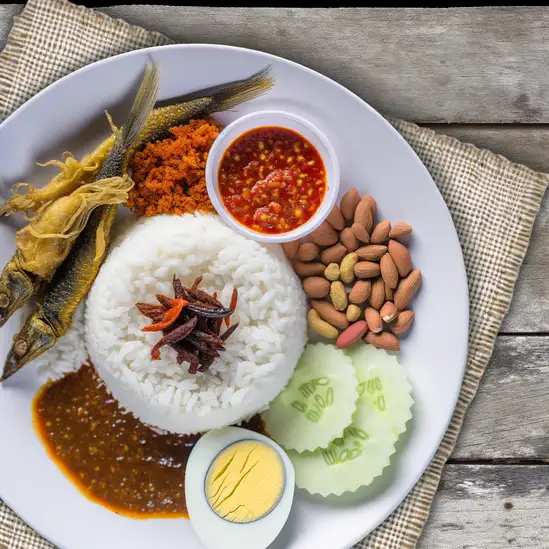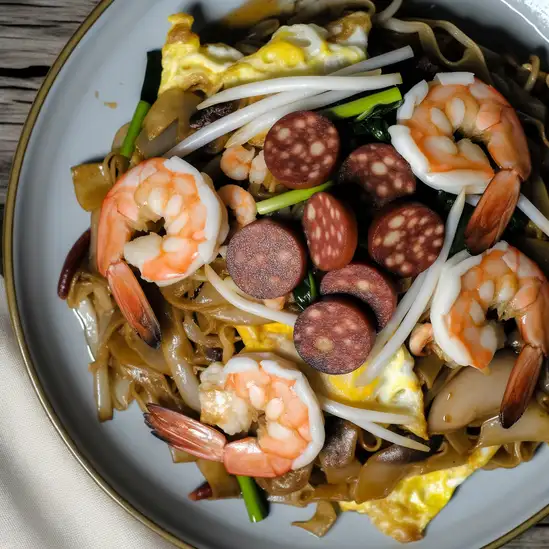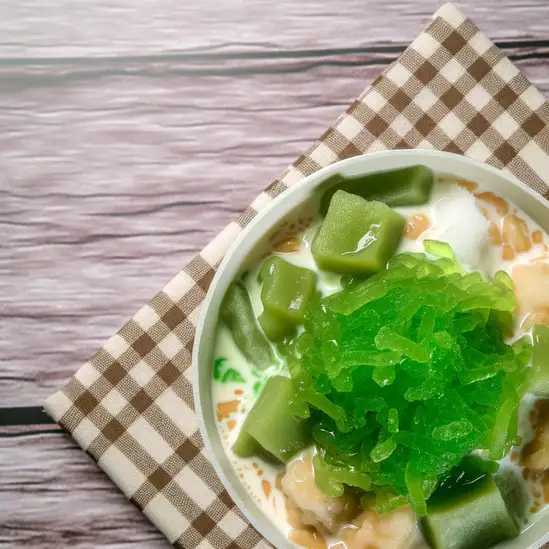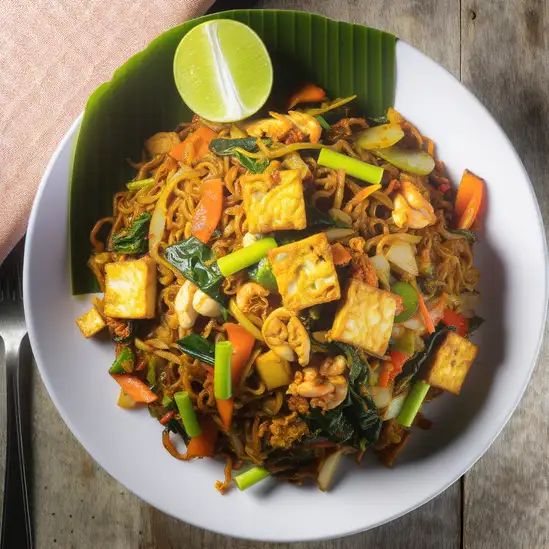


Imagine stepping onto Tioman Island and instantly feeling the gentle embrace of tropical warmth mixed with the salty kiss of the sea breeze. This place has a laid-back rhythm that slows you down in the best way—where mornings start with the soft chatter of birds and the distant splash of waves,and evenings glow with fiery sunsets melting into the horizon. The island’s lush greenery spills down to meet crystal-clear waters,where vibrant coral reefs pulse with life just beneath the surface. Snorkeling here feels like swimming through a living painting,with schools of colorful fish darting around you like curious dancers. Tioman’s charm isn’t just in its natural beauty; it’s in the easy smiles of the locals and the simple pleasures of island life. You’ll find small beachside stalls serving up fresh seafood grilled over open flames,the aroma mingling with the scent of tropical flowers and ocean air. The pace is unhurried,inviting you to savor every bite of spicy laksa or sip on a sweet coconut while watching fishermen haul in their catch. What really makes Tioman special is its blend of adventure and tranquility. Whether you’re hiking through dense jungle trails alive with the calls of exotic birds or lounging in a hammock with a book,the island feels like a place where time stretches and worries fade. It’s a spot that invites you to reconnect—with nature,with yourself,and with the simple joy of being somewhere truly alive.
The information on this page is currently being reviewed by Tripkliq and should be used as a guide only
Eng word: Hello
Eng pronunciation: Ha-lo
Local language: Halo
Eng word: Goodbye
Eng pronunciation: Se-la-mat ting-gal
Local language: Selamat tinggal
Eng word: Thank you
Eng pronunciation: Te-ri-ma ka-sih
Local language: Terima kasih
Eng word: How much
Eng pronunciation: Be-ra-pa
Local language: Berapa
Eng word: Toilet
Eng pronunciation: Tan-das
Local language: Tandas
Eng word: Help me
Eng pronunciation: To-long sa-ya
Local language: Tolong saya
Eng word: Yes
Eng pronunciation: Ya
Local language: Ya
Eng word: No
Eng pronunciation: Ti-dak
Local language: Tidak
Eng word: Excuse me
Eng pronunciation: Ma-af
Local language: Maaf
Tioman Island has been a significant trading hub since ancient times, attracting traders from China, India, and the Middle East due to its strategic location along maritime trade routes.
According to local legend, Tioman Island was formed when a beautiful dragon princess stopped to rest in the South China Sea on her way to visit her prince. Enchanted by the beauty of the area, she decided to stay and transformed into the island.
During the colonial era, Tioman Island was visited by European explorers and traders. The island's natural beauty and strategic location made it a point of interest for colonial powers.
During World War II, Tioman Island was used as a hideout by both Japanese and Allied forces. The island's dense jungles and secluded beaches provided perfect cover for military operations.
In 1994, Tioman Island and its surrounding waters were designated as a marine park to protect its rich marine biodiversity. This has helped preserve the island's coral reefs and marine life, making it a popular destination for divers and snorkelers.
Tioman Island gained international fame when it was featured in the 1958 Hollywood movie 'South Pacific.' The island's stunning scenery served as the backdrop for several scenes in the film.
Tioman Island is home to a diverse ecosystem, including lush rainforests, mangroves, and coral reefs. The island's unique flora and fauna attract nature enthusiasts and researchers from around the world.
The island is home to several traditional Malay villages, where visitors can experience the local culture, cuisine, and way of life. The friendly locals are known for their hospitality and warmth.
Since the 1970s, Tioman Island has developed into a popular tourist destination, offering a range of accommodations, activities, and amenities while maintaining its natural charm and beauty.
In Tioman Island, the most common Power Adaptor is Type G.


A fragrant rice dish cooked in coconut milk, served with sambal, fried crispy anchovies, peanuts, boiled egg, and cucumber.

Stir-fried flat rice noodles with shrimp, Chinese sausage, eggs, and bean sprouts, flavored with soy sauce and chili.

A flaky, buttery flatbread often served with dhal (lentil curry) or other types of curry.

A spicy noodle soup with a coconut milk base, typically served with shrimp, fish, or chicken, and garnished with fresh herbs.

A popular dessert made with shaved ice, coconut milk, green rice flour jelly, and palm sugar syrup.

Spicy fried noodles typically made with egg noodles, vegetables, tofu, and sometimes chicken or shrimp.

Grilled stingray marinated in spicy sambal sauce, often served with rice and a side of fresh vegetables.
Kuala Lumpur feels like a vibrant heartbeat pulsing through the heart of Malaysia—where tradition and modernity dance effortlessly together. The moment you step into the city,you’re greeted by the towering silhouettes of the Petronas Twin Towers piercing the sky,their glass facades shimmering against the tropical sun. But it’s not just the skyline that captivates you; it’s the lively street scenes below. The air buzzes with the chatter of street vendors,the sizzle of satay grilling over open flames,and the sweet aroma of pandan and lemongrass wafting from bustling food stalls.
Walking through neighborhoods like Bukit Bintang or Chinatown,you’ll find a kaleidoscope of colors and sounds—vibrant markets brimming with spices,textiles,and handcrafted trinkets,while the calls to prayer from nearby mosques blend harmoniously with the hum of city life. The city’s rich cultural tapestry is woven from Malay,Chinese,and Indian influences,creating a unique blend you can taste in every bite of nasi lemak or teh tarik.
What I love most is how Kuala Lumpur never feels rushed. Whether you’re sipping kopi at a roadside stall or wandering through the lush greenery of the KL Forest Eco Park,there’s a warm,welcoming energy that invites you to slow down and soak it all in. It’s a city that surprises you at every turn—full of contrasts,flavors,and stories waiting to be discovered.
Imagine stepping into a city where sleek skyscrapers meet lush greenery,and every corner hums with a vibrant energy that’s both modern and deeply rooted in tradition. That’s Singapore for you—a place where the air carries the fragrant mix of blooming orchids and sizzling street food,and the streets buzz with a blend of languages and laughter. Walking through neighborhoods like Chinatown or Little India,you’ll catch the rich aromas of spices mingling with the sweet scent of tropical fruits,inviting you to explore further.
What’s truly captivating about Singapore is how effortlessly it balances the fast-paced pulse of a global hub with pockets of serene beauty. You can be wandering through the futuristic Gardens by the Bay one moment,marveling at the towering Supertrees glowing softly at dusk,and the next,find yourself savoring a bowl of laksa or chili crab at a bustling hawker center,surrounded by locals chatting animatedly. The city’s character shines through its people—warm,diverse,and proud of their heritage,yet always welcoming.
There’s a rhythm here that’s both energizing and comforting. Whether you’re cycling along the waterfront,catching a sunset over Marina Bay Sands,or simply sipping kopi in a cozy café,Singapore invites you to slow down and soak in its unique blend of cultures,flavors,and sights. It’s a city that surprises you with its layers,making every visit feel like a new discovery.
If you wander into George Town,Malaysia,you’ll immediately feel like you’ve stepped into a living canvas where history and modern life dance together effortlessly. The streets hum with a gentle buzz—motorbikes weaving past colorful shophouses,the chatter of locals blending with the clatter of street vendors setting up their stalls. There’s a warmth in the air,not just from the tropical sun but from the genuine smiles of people who clearly love their city.
As you stroll through the narrow lanes,your senses come alive. The scent of freshly fried char kway teow mingles with the earthy aroma of kopi brewing in tiny coffee shops. Walls burst with vibrant street art that tells stories of the city’s rich multicultural heritage—Chinese,Malay,Indian,and more—all coexisting in a beautiful patchwork. You can almost taste the history in the air,from the colonial architecture to the centuries-old temples tucked between modern cafes.
What makes George Town truly special is its soul. It’s a place where tradition isn’t stuck in the past but woven into everyday life. Whether you’re savoring a bowl of laksa at a hawker stall or chatting with an artist in a cozy gallery,you feel connected to something authentic and alive. It’s a city that invites you to slow down,explore with curiosity,and fall in love with its stories,one flavorful bite and colorful corner at a time.
Imagine stepping into a place where the ocean breeze carries the scent of salty waves mingled with sizzling street food,and the sky melts into hues of pink and orange as the sun dips behind lush mountains. That’s Kota Kinabalu for you—a vibrant city that feels alive yet effortlessly laid-back. It’s the kind of place where you can wander through bustling markets filled with the chatter of locals,the clinking of fresh seafood on ice,and the rich aroma of spices from nearby stalls. The city pulses with a warm,welcoming energy that instantly makes you feel at home.
What really sets Kota Kinabalu apart is its seamless blend of nature and culture. You’re never far from the stunning backdrop of Mount Kinabalu,whose towering presence invites adventure and awe. At the same time,the city’s streets are a colorful tapestry of indigenous traditions,Malay influences,and Chinese heritage,all coming together in lively festivals,art,and food. Don’t miss trying the fresh seafood—imagine biting into a juicy,chili-laced grilled fish while the ocean breeze cools your skin.
Evenings here are magical. The waterfront comes alive with twinkling lights,the hum of live music,and the laughter of friends sharing meals under the stars. Whether you’re sipping a tropical drink or exploring night markets,Kota Kinabalu wraps you in a cozy,spirited embrace that stays with you long after you leave.
Imagine stepping into a place where the air hums with the gentle rhythm of waves lapping against sun-warmed shores,and the scent of salty sea mingles with fragrant street food stalls. That’s Phuket for you—a vibrant island that feels alive in every sense. It’s not just the stunning beaches that grab you,but the way the island pulses with a laid-back energy,where colorful markets buzz with chatter and the aroma of grilled seafood fills the air. Walking through the old town,you’ll find charming Sino-Portuguese buildings painted in pastel hues,their shutters creaking softly in the tropical breeze,while tuk-tuks zip by,adding a playful soundtrack to your explorations.
Phuket’s character is a beautiful blend of tradition and liveliness. Temples with golden spires peek out from lush greenery,inviting quiet moments of reflection,while nearby,night markets burst with life—vendors calling out,sizzling woks,and the sweet tang of mango sticky rice tempting your taste buds. The island’s culture is warm and welcoming,with locals who smile easily and share stories over cups of strong Thai coffee or fresh coconut water.
What makes Phuket truly special is how it wraps you in its embrace—whether you’re watching a fiery sunset from a cliffside bar,diving into crystal-clear waters teeming with vibrant marine life,or simply savoring the spicy kick of a freshly made curry. It’s a place that invites you to slow down,soak in the colors,sounds,and flavors,and leave with a heart full of unforgettable moments.
If you’re dreaming of a place where nature’s beauty feels like it’s wrapped around you like a warm hug,Langkawi is that kind of magic. The moment you step off the ferry or plane,there’s this gentle tropical breeze carrying the scent of salt and frangipani,instantly calming your mind. The island hums with a laid-back energy—no rush,just the soft rustle of palm leaves and the distant call of exotic birds. It’s the kind of place where time slows down,inviting you to soak in every vibrant detail.
Langkawi’s charm lies in its wild,lush landscapes meeting the turquoise sea. Imagine hiking through dense rainforests where sunlight filters through the canopy,dappling the forest floor,or standing on the Sky Bridge,suspended high above the treetops,with panoramic views that steal your breath away. The beaches aren’t just pretty—they’re alive with the sound of gentle waves lapping against powdery white sand,and the taste of fresh seafood grilled right on the beach,bursting with smoky,spicy flavors.
What really makes Langkawi special is its blend of cultures and stories. You’ll find local markets buzzing with friendly vendors offering tropical fruits and handmade crafts,while the island’s legends and history whisper through ancient temples and mangrove forests. It’s a place where you can lose yourself in nature,savor authentic Malay flavors,and feel the genuine warmth of the people. Trust me,Langkawi isn’t just a destination—it’s a feeling you’ll want to carry with you long after you leave.
Some tourists have reported paying deposits for accommodations online, only to find out the property doesn't exist or is in poor condition upon arrival.
Unlicensed money changers may offer poor exchange rates or shortchange tourists during currency exchanges.
Scammers may pose as officials and charge fake 'conservation fees' or other environmental taxes that are not legitimate.
Scammers may sell fake or substandard tour packages, promising snorkeling or diving trips that either don't happen or are of very poor quality.
Tourists may be charged excessive fees for renting snorkeling, diving, or other recreational equipment, often with hidden charges added later.
Some operators may charge tourists significantly higher prices for boat transfers to and from Tioman Island, especially if tickets are purchased last minute or through unofficial agents.
While Tioman Island is small, some private transport providers may overcharge tourists for short rides, especially if they are unfamiliar with local rates.
Malaysia has very strict drug laws, and Tioman Island is no exception. The possession, use, or trafficking of illegal drugs can result in severe penalties, including the death penalty for certain offenses. Tourists should avoid any involvement with illegal drugs and be aware that even small quantities can lead to significant legal consequences.
In Tioman Island, Malaysia, smoking is regulated under the Control of Tobacco Product Regulations 2004. Smoking is prohibited in certain public areas such as government buildings, hospitals, schools, and public transportation. There are designated smoking areas where smoking is allowed. Tourists should look for signs indicating smoking zones and adhere to local regulations to avoid fines.
Vaping is subject to similar regulations as smoking in Malaysia. The sale and use of e-cigarettes are legal, but vaping is prohibited in the same public areas where smoking is banned. Tourists should use designated smoking areas for vaping as well and be mindful of local laws to avoid penalties.
What are other people saying about Tioman Island?
Recent Social posts about Tioman Island
There is nothing to show you for now.